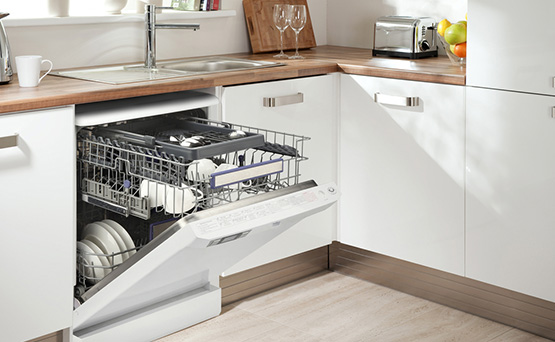
Because it directly relates to the layout of your kitchen space. If it is too big or too small, it will waste space and lose aesthetics.
When researching dishwashers, you have probably heard terms like “6-place setting dishwasher” or “12-place setting dishwasher”… This is how to determine the maximum number of dishes the machine can wash, not the size of the machine, which is often misunderstood. When we talk about size, we are talking about the measurements of length, width, and height of the product. By understanding these measurements, you can determine which machine is most suitable for your kitchen space.
Dishwasher Sizes
Dishwashers can be divided into three main types: countertop dishwashers, freestanding dishwashers, and built-in dishwashers.
Countertop Dishwashers
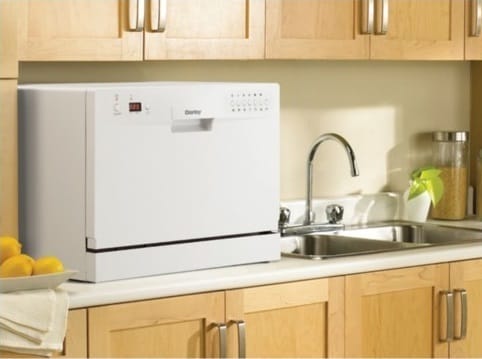
– Countertop dishwashers are the smallest type of dishwasher. For small-sized families, tight spaces, or households with 1-2 users, this is an option that cannot be ignored.
– The advantage of countertop dishwashers is their compact size, making them easy to place in various positions in the kitchen.
– The disadvantage of this type is the small washing space, with only 1 compartment, so large cookware like pots and pans cannot be used.
– Basic dimensions for this type: Height x Width x Depth: 450 x 550 x 500 (mm)
Freestanding Dishwashers
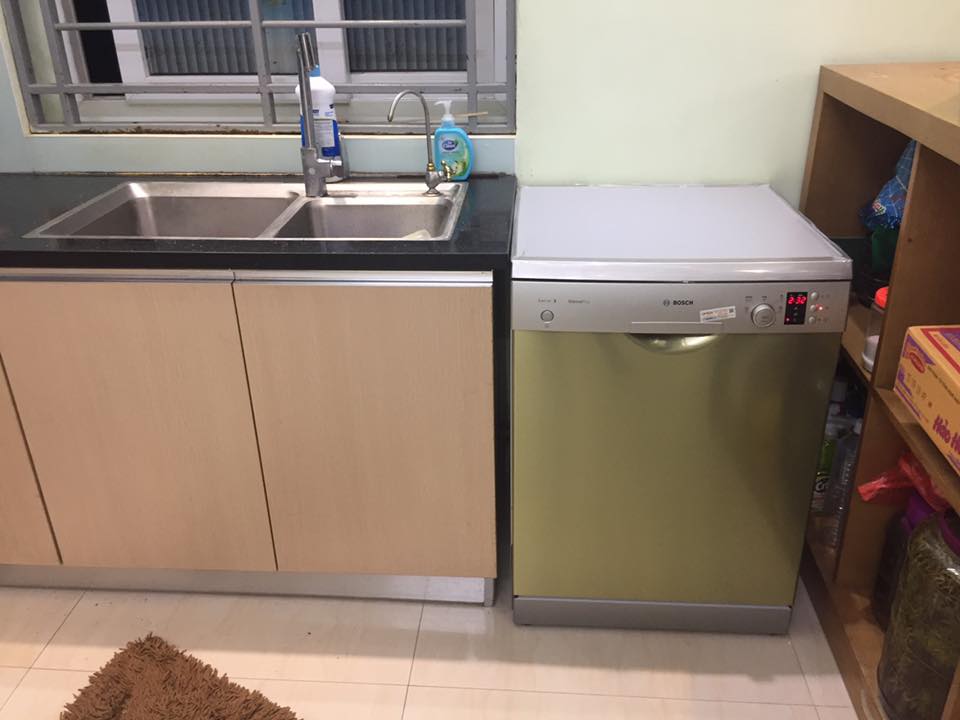
Built-in Dishwashers
Built-in dishwashers are installed inside the cabinet, so the kitchen furniture and cabinet system must be carefully designed and positioned to fit. Typically, this type of machine is purchased and installed during the kitchen construction process.
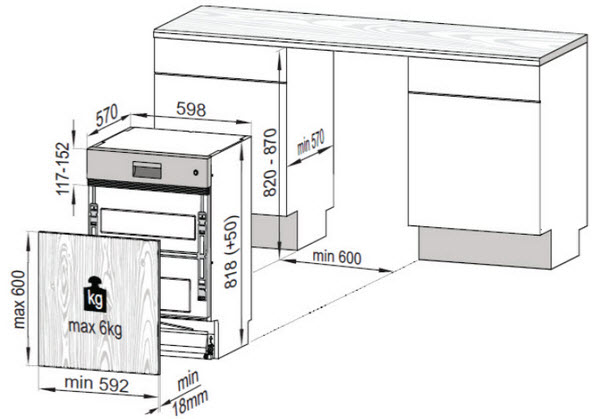
The advantages of built-in dishwashers are their high aesthetics, bringing modern, elegant, and space-saving beauty to the kitchen. For small kitchens, built-in dishwashers are the right choice. The size of built-in dishwashers is much larger than other types, usually: 81.5cm x 60cm x 60cm (Height x Width x Depth), so they can wash a considerable amount of dishes and cookware. This is the standard size for installing a built-in dishwasher. Built-in dishwashers also have two separate types: fully integrated and semi-integrated.
- Semi-Integrated Type: This type has the control panel on the outside, and the door can be designed to match the kitchen cabinet color or some models have stainless steel doors.
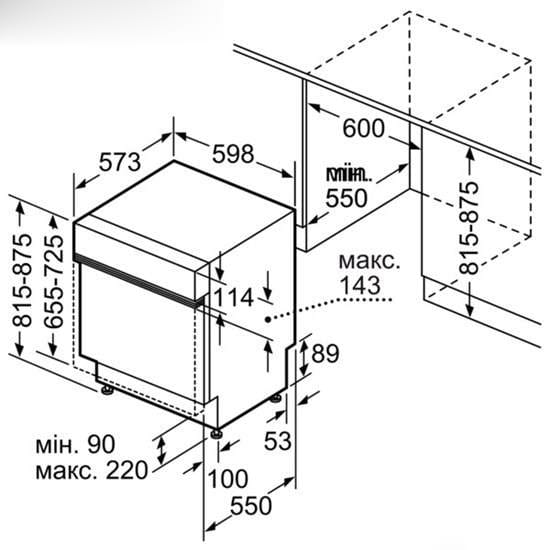
- Fully Integrated Type: The installation method of fully integrated dishwashers is similar to the semi-integrated type, the difference lies in the control panel placed on the top surface of the door, so when the door is closed, it is inside the cabinet. The advantage of this type is that the entire door can be color-customized according to the user’s preference. The disadvantage of this type is that it is quite expensive compared to other types.
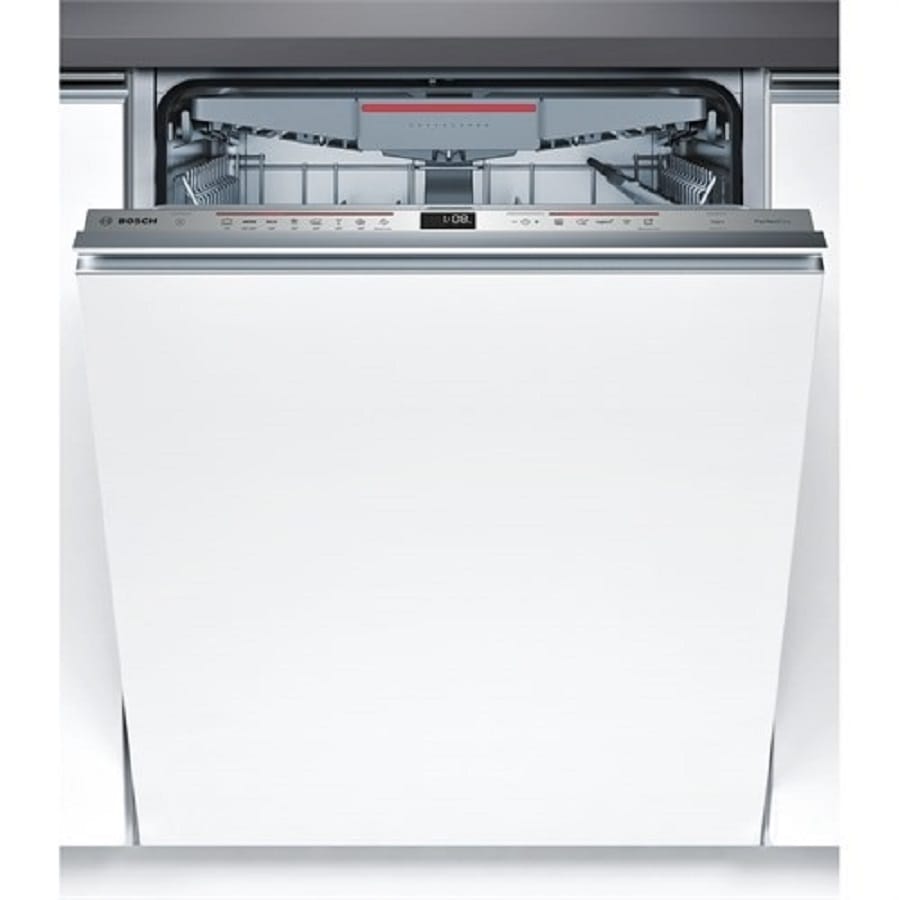
The Ultimate Guide to Installing a Dishwasher in 2021
After purchasing and receiving the dishwasher, the first thing to do is to properly install it in a suitable location and learn how to use it easily and conveniently. Following the correct installation instructions is one of the key considerations to ensure that the product operates smoothly, thereby extending its lifespan.

































